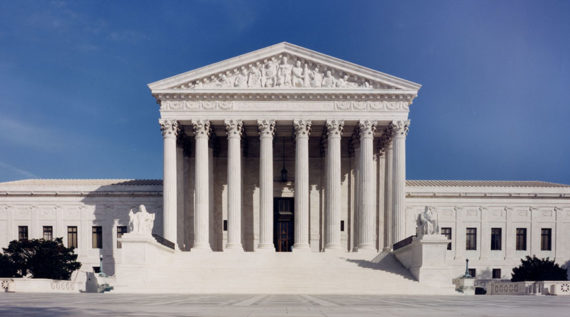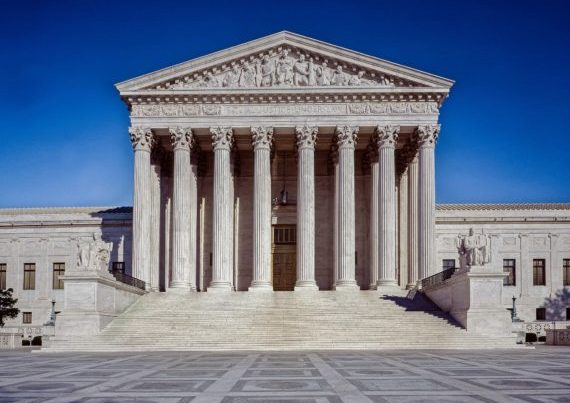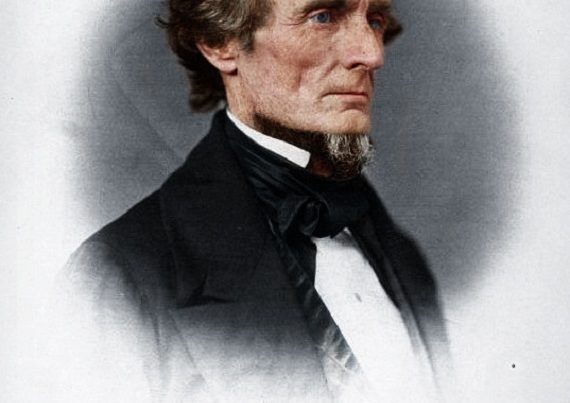The leading authority on this aspect of affirmative action is Schuette v. Coalition to Defend Affirmative Action (2014), in which the U.S. Supreme Court ruled (by a plurality) that it is permissible for a state to ban affirmative action. The case arose out of a voter-approved initiative amending the constitution of Michigan that made affirmative action illegal in public education, public employment and public contracting (with the exception of actions mandated by federal law or where federal funding is needed). The plurality opinion was written by Justice Anthony Kennedy, joined by Chief Justice Roberts and Justice Alito, and with the concurrence of Justices Scalia and Thomas. The opinion is somewhat puzzling, because, as Kennedy stressed, the ruling was “not about the constitutionality, or the merits, of race-conscious admissions policies in higher education…..The question here concerns not the permissibility of race-conscious admissions policies under the Constitution but whether, and in what manner, voters in the States may choose to prohibit the consideration of racial preferences in governmental decisions, in particular with respect to school admissions.” He concluded: “This case is not about how the debate about racial preferences should be resolved. It is about who may resolve it. There is no authority in the Constitution of the United States or in this Court’s precedents for the Judiciary to set aside Michigan laws that commit this policy determination to the voters.” For “Michigan laws” one may read “the laws of any state”, as there is nothing in this decision that is not equally applicable to any other state. Justices Scalia and Thomas in their concurring opinion were more hard-hitting, reiterating Justice Harlan’s oft-quoted dissenting opinion in Plessy v. Ferguson (1896): “Our Constitution is color-blind, and neither knows nor tolerates classes among citizens.”
Schuette: Three Principles
The ruling in Schuette therefore combines three fundamental principles: the ideal of a color-blind Constitution, the right of every state to pursue that ideal, and the democratic right of the citizens of every state to implement it.
After Schuette, opponents of affirmative action lost no time in calling on other states to follow Michigan’s example by banning affirmative action. None have done so, although seven states besides Michigan had already banned affirmative action. Florida’s ban, which has been in place since 1999, was enacted not by popular vote but by an executive order of Governor Jeb Bush. It covers affirmative action not only in admissions to public universities but also in state hiring and contracting. Race-based university admissions have been replaced with the “talented twenty program”, which grants automatic admission to students in the top 20% of their graduating high school class. The order has also increased financial aid to college students in need. Would this eminently fair order pass muster under the Schuette test if it were to face a challenge in the U.S. Supreme Court? Almost certainly, yes.
Why Have no Other Southern States Followed Suit?
But why have no other southern states followed suit? According to the Pew Research Center, 63% of people surveyed nationally in 2014 claimed to be in favor of race-based affirmative action.” (www.pewresearch.org). Despite Pew’s description of itself as a “nonpartisan fact tank”, this figure should probably be taken with a grain of salt, especially when contrasted with an opposite Gallup poll finding of July 2016 that 70% of “Americans continue to believe colleges should admit applicants based solely on merit.” (https://news.gallup.com).
Taken together, these figures give us no real clue about the reason for the failure of southern states to follow Schuette. What then about the advantages and disadvantages of affirmative action? The plain undeniable fact is that race-based affirmative action is discriminatory – discriminatory against whites (and possibly Asians) and in favor of blacks and Hispanics, according these favored groups special privileges. Clarence Thomas, the only black justice on the Supreme Court, who grew up in Savannah, Georgia, is well aware of this fact. He attached a 15-cent discount sticker from a cigar packet to his Yale law diploma. “I’d graduated from one of America’s top law schools,” he comments, “but racial preference had robbed my achievement of its true value.” Getting his foot on the ladder after graduation from law school was difficult. “Many asked pointed questions, unsubtly suggesting that they doubted I was as smart as my grades indicated.”
Affirmative Action in the South
Affirmative action is now more controversial than ever, with the rescission on July 3, 2018, by Attorney General Jeff Sessions of 24 Obama-era guidance documents that promoted affirmative action, and with the U.S. Justice Department’s weighing in on the lawsuit against Harvard alleging discrimination against Asian-American applicants.
The ongoing battle over affirmative action will affect the South as much as, if not more so than, the rest of the country. Here are a few recent developments in respect of affirmative action in southern states:
- Texas: The leading case on affirmative action in general is Fisher v. University of Texas (2013 & 2016). Abigail Fisher, a white applicant who had been denied admission by the University, filed suit alleging discrimination against her on grounds of race. In June 2016 the U.S. Supreme Court, by a majority of 4-3, ruled against Fisher and in favor of the University’s use of affirmative action in its admissions policy.
- Georgia: In 2001 the U.S. Court of Appeals for the Eleventh Circuit ruled that the admissions policy of the University of Georgia system, which added points for non-white racial status, violated the Equal Protection Clause of the Fourteenth Amendment.
- North Carolina: In November 2014 the Project on Fair Representation filed a lawsuit against the University of North Carolina-Chapel Hill seeking to end the university’s use of race in admissions.
- Virginia: The University of Virginia still considers race a “very important” factor in admissions, and it is also considered “important” by the Virginia Military Institute.
Affirmative Action and Diversity
One of the main arguments in favor of affirmative action is to promote “diversity”. This keeps on being repeated. “Educators know that all students, and not just our students of color, benefit from diverse and inclusive classrooms”, wrote Lily Eskelsen Garcia, president of the National Education Association, in a 2018 statement. By contrast, Clarence Thomas remarked in connection with his opposition to desegregation busing that “you [viz. a black student] don’t need to sit next to a white person to learn how to read and write” (Clarence Thomas, My Grandfather’s Son, New York: Harper Collins, 2008). It is arguably demeaning to black students to assume that they need the close proximity of whites in order to benefit from schooling.
Advocates of affirmative action tend to assume that, despite discriminating against whites, affirmative action at least has the desired effect of advancing blacks and Hispanics. But even this may not be true. A 1992 study led by Gary Orfield, a Harvard professor and a supporter of desegregation busing, concluded that black and Hispanic students lacked “even modest overall improvement” as a result of busing.
But what about the benefits of affirmative action generally? Detailed recent research by a UCLA law professor concluded: “Mismatch largely explains why, even though blacks are more likely to enter college than are whites with similar backgrounds, they will usually get much lower grades, rank toward the bottom of the class, and far more often drop out; why there are so few blacks and Hispanics with science and engineering degrees or with doctorates in any field; and why black law graduates fail bar exams at four times the white rate.” But what is the definition of “mismatch”? “It is not lack of talent or innate ability that drives these students to drop out of school, flee rigorous courses, or abandon aspirations to be scientists or scholars; it is, rather, an unintended side effect of large racial preferences , which systematically put minority students in academic environments where they feel overwhelmed.” (Richard Sander & Stuart Taylor, Jr. Mismatch: How Affirmative Action Hurts Students It’s Intended to Help, and Why Universities Won’t Admit it, Basic Books, 2012, p. 4).
A similar point specifically geared to Texas, was made by Justice Antonin Scalia during oral arguments in Fisher v. University of Texas at Austin (Fisher I) in 2015. Citing an amicus brief, Scalia remarked: “There are those who contend that it does not benefit African Americans to get them into the University of Texas where they do not do well, as opposed to having them go to a less-advanced school, a slower-track school where they do well.”
HCBUs
Needless to say, this proposition is hotly contested by the supporters of affirmative action. But there is some support for Scalia’s point in the South. There are 105 “historically black colleges and universities” (HBCUs) in the U.S. as a whole, the overwhelming majority of which are in the South and a number of which enjoy high reputations. Of these 105 HBCUs there are six Historically Black Law Schools that are accredited by the American Bar Association. Four of these law schools are in the South. In 2015 the Bipartisan HBCU Caucus was established to serve as an advocate for HBCUs on Capitol Hill. As of September 2017 there were 62 elected federal lawmakers who were members of the caucus.
Schuette a Blip
The Schuette decision allowing states to ban affirmative action is really a blip. It occurred only because a state had already taken the bull by the horns by banning affirmative action. Anthony Kennedy, the swing vote on the Court, wrote the winning opinions in both Schuette and Fisher II – the former allowing a ban on affirmative action and the latter upholding affirmative action. But this is not as ironic as it may seem. For, in allowing the ban Schuette was not passing judgment on the desirability or even the constitutionality of affirmative action, only on the legality and constitutionality of a state’s democratic decision to ban it.
Non-Schuette States Still Subject to Uncertain Law
The Schuette solution remains open to the 42 states that have not yet availed themselves of it – including all but one of the southern states. But, unless or until they do embrace the safe haven of Schuette, those states are still subject to the vagaries of the law on affirmative action. It cannot be emphasized enough that a state that does not opt for the protection of Schuette is likely to find itself in the choppy and treacherous seas of the Bakke-Grutter-Fisher succession of cases.
Here is a brief rundown of those decisions: Regents of the University of California v. Bakke (1978), a messy plurality decision, ruled that race could be used as one of a university’s admissions criteria but that racial quotas were unconstitutional. Grutter v. Bollinger and Gratz v. Bollinger, decided on the same day in 2003, reached two opposite and barely compatible decisions, the former upholding the affirmative action admissions policy of the University of Michigan Law School, while the latter struck down the University of Michigan’s slightly more rigid point-based undergraduate admissions policy, which was deemed to amount to a quota. Fisher v. University of Texas at Austin (Fisher I) (2013) was an indecisive case, in which the U.S. Supreme Court sidestepped the issue and remanded the case back to the Fifth Circuit Court of Appeals. Fisher v. University of Texas at Austin (Fisher II) (2016) found that the University’s affirmative action admissions policy complied with the three “controlling principles” set in Fisher I. Justice Alito, supported by Chief Justice Roberts and Justice Thomas, vigorously dissented. In a separate dissent Justice Thomas stressed that “a State’s use of race in higher education admissions is categorically prohibited by the Equal Protection Clause.”
Conclusion
In conclusion, the Schuette ruling stands as a beacon of hope amidst the turbulent and unpredictable choppy seas of the law on affirmative action. Schuette should be particularly attractive to the South, where the rich supply of HBCU schools, possibly coupled with a “talented twenty” program as in Florida, should make a ban on affirmative action proof against legal attack.







